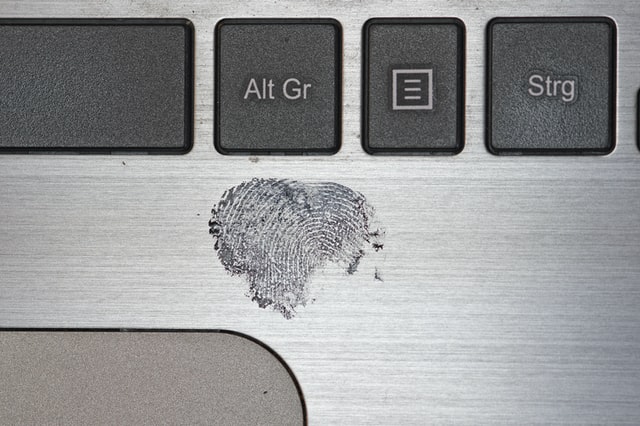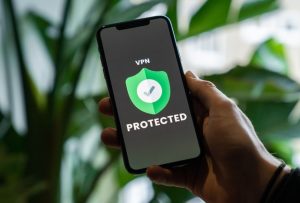Biometrics is a powerful tool for identifying and authenticating individuals. It relies on partial information to verify a user’s identity, such as fingerprints, facial recognition, or mobile biometric authentication. With the latest advances in biometrics technology, users can now protect their data from identity theft more effectively than ever before.
Fingerprints are one of the most common methods of biometric authentication used today. Fingerprint scanning works by capturing an image of the user’s fingerprint and then comparing it to a stored template in order to verify their identity. This method is highly secure and difficult to bypass due to its unique nature; no two people have identical fingerprints.
Facial recognition is another popular form of biometric authentication that uses facial features such as eyes, nose, mouth shape and size to identify users. This method has become increasingly popular due to its convenience; all you need is a camera or smartphone with facial recognition capabilities in order to access your data securely.
Mobile biometric authentication is also gaining traction as an effective way of protecting your data from identity theft. Mobile devices are equipped with sensors that can detect unique characteristics such as voice patterns or even heartbeat rhythms which can be used for verification purposes without having any physical contact with the device itself.
Despite these advances in security technology, there are still risks associated with using biometrics for identification purposes; if someone were able to gain access to your stored templates they could potentially use them for malicious purposes such as fraud or identity theft. Therefore it’s important that users take extra precautions when using this type of technology by ensuring their devices are kept secure at all times and only allowing trusted individuals access their personal information via secure channels like encryption software or two-factor authentication systems .
Overall, the latest advances in identity theft biometrics have made it easier than ever before for users protect themselves against fraudsters and hackers alike while still enjoying convenient access control solutions like fingerprint scanning and facial recognition technologies .
What is Biometric Authentication?
Biometric authentication is a form of authentication that uses physical characteristics of an individual, such as their fingerprint, voice, face, or iris, to identify them. This form of authentication is becoming increasingly popular in both the consumer and enterprise worlds due to its ability to provide an extra layer of security. Biometric authentication compares data for the person’s characteristics to that person’s biometric “template” in order to determine resemblance and verify identity. The most common biometric authentication methods rely on partial information such as fingerprints or voices for identification. Iris recognition is widely considered the most accurate modality of biometric identification and works by capturing an image of the user’s iris which is then compared against a stored template. Mobile biometrics are also becoming more popular with users being able to use facial recognition or fingerprint scanning on their phones for secure access. With these advances in technology, it has become easier than ever before for individuals and businesses alike to protect themselves from identity theft through biometrics.
The Latest Advances in Biometric Authentication
The latest advances in biometric authentication have enabled improved accuracy and speed of authentication. This has been made possible by the development of sophisticated algorithms that use artificial intelligence to accurately identify a person’s physical characteristics. Multi-factor authentication is also becoming increasingly popular, as it requires two or more forms of biometric authentication such as facial recognition and fingerprint scanning to verify a person’s identity. Biometric identification provides high security and assurance, as it answers “something a person has and is” to help verify identity. Verification systems are faster than identification systems, as they only require a comparison between the presented biometric data and the stored template. AI Solution Architect, PhD explains how biometrics can be used with Artificial Intelligence for enterprise applications. Michael Trader, president of RightPatient, an iris scanning biometrics technology vendor has seen increased adoption of this technology in healthcare settings due to its ability to provide secure access control while maintaining patient privacy.
How Biometric Authentication is Helping to Protect Against Identity Theft
Biometric authentication is becoming an increasingly popular way to protect against identity theft. By using a person’s unique physical characteristics, such as their fingerprint, earlobe geometry, voice authentication, iris or facial recognition, it makes it much more difficult for someone to gain access to a system or data using stolen or false credentials. Multi-factor authentication (MFA) adds an extra layer of security by requiring two or more forms of authentication before granting access. This type of MFA is beneficial in the enterprise world as it helps ensure that only authorized personnel have access to sensitive information. Furthermore, having a MFA system with biometrics is the first step towards eliminating fraud and going passwordless. Additionally, two-factor authentication (2FA) requires another credential alongside biometric measurements in order to verify identity and further protect against identity theft. Paying particular attention to how you keep personally identifying information such as Social Security numbers and credit card details can also help reduce the risk of identity theft. With these measures in place businesses can be sure that their data and systems are secure from unauthorized access.
Conclusion
In conclusion, biometric authentication is becoming increasingly popular as a way to protect against identity theft. By using a person’s unique physical characteristics, it makes it much more difficult for someone to gain access to a system or data using stolen or false credentials. Multi-factor authentication (MFA) combines two or more independent credentials such as passwords, security tokens and biometrics like fingerprints, earlobe geometry, voice authentication, iris and facial recognition. This type of MFA uses your physical characteristics to verify your identity and is the first step towards eliminating fraud and going passwordless. Biometric authentication compares data for the person’s characteristics to that person’s biometric “template” in order to determine resemblance. Fingerprint scanners are one of the most common forms of biometric authentication used today. As technology advances, biometric authentication will continue to evolve and become even more secure in protecting against identity theft.




This is just another ignorant group pushing the digital ID agenda. Man has existed on this earth for 6000 years. Only now is the claim that giving up your bio metrics will somehow stop theft. It won’t criminals eventually catch up. Ever see mission impossible where they get finger prints from a glass to break in? What this is about is connecting a social credit score to your biometrics, and shutting your identity off if you don’t conform. This was predicted 200o years ago
“And he causeth all, both small and great, rich and poor, free and bond, to receive a mark in their right hand, or in their foreheads:” Rev 13:16